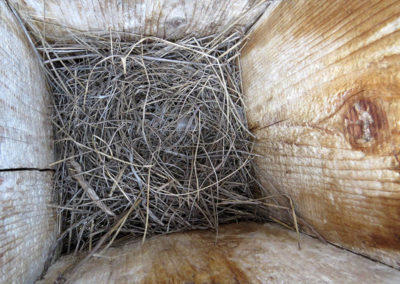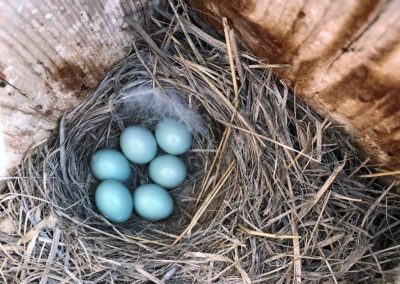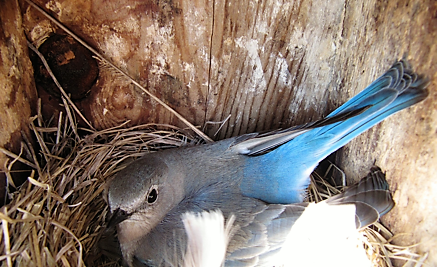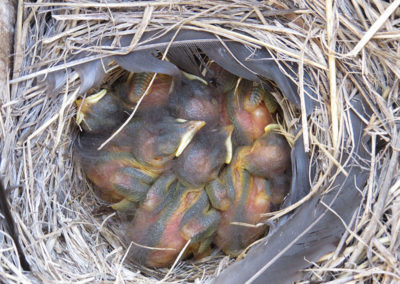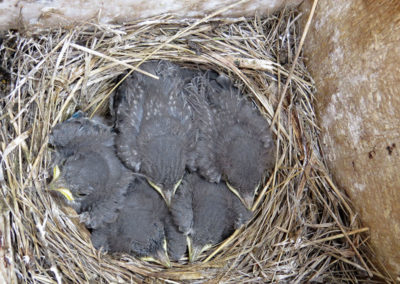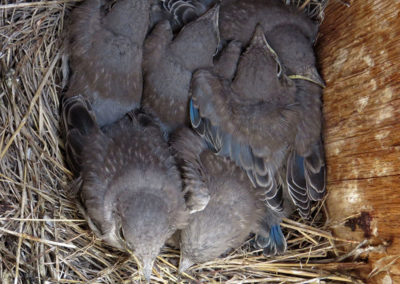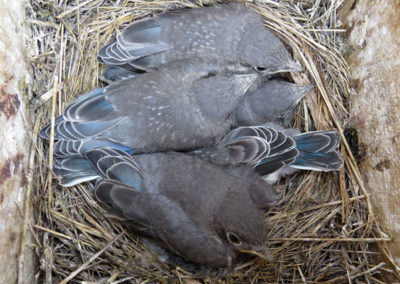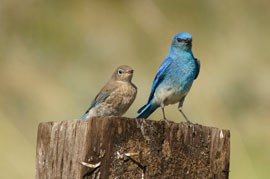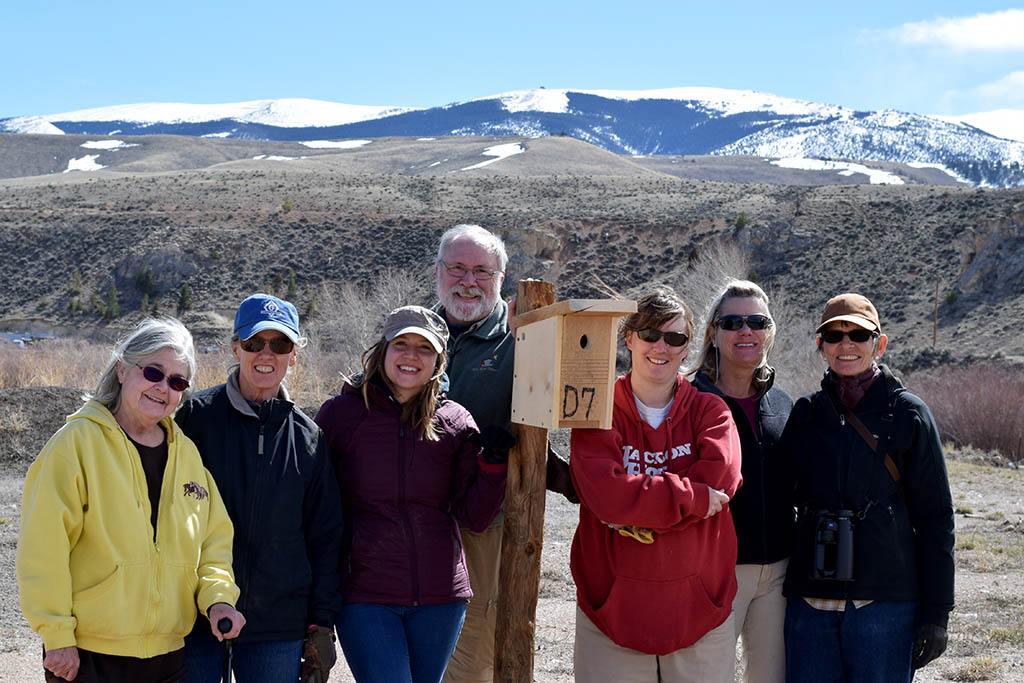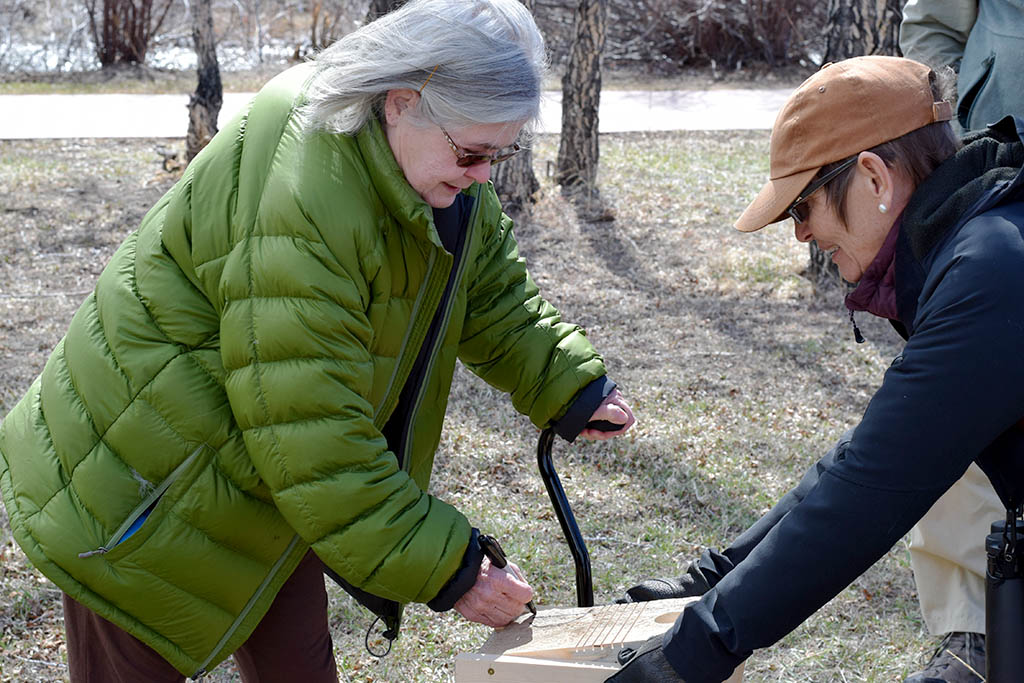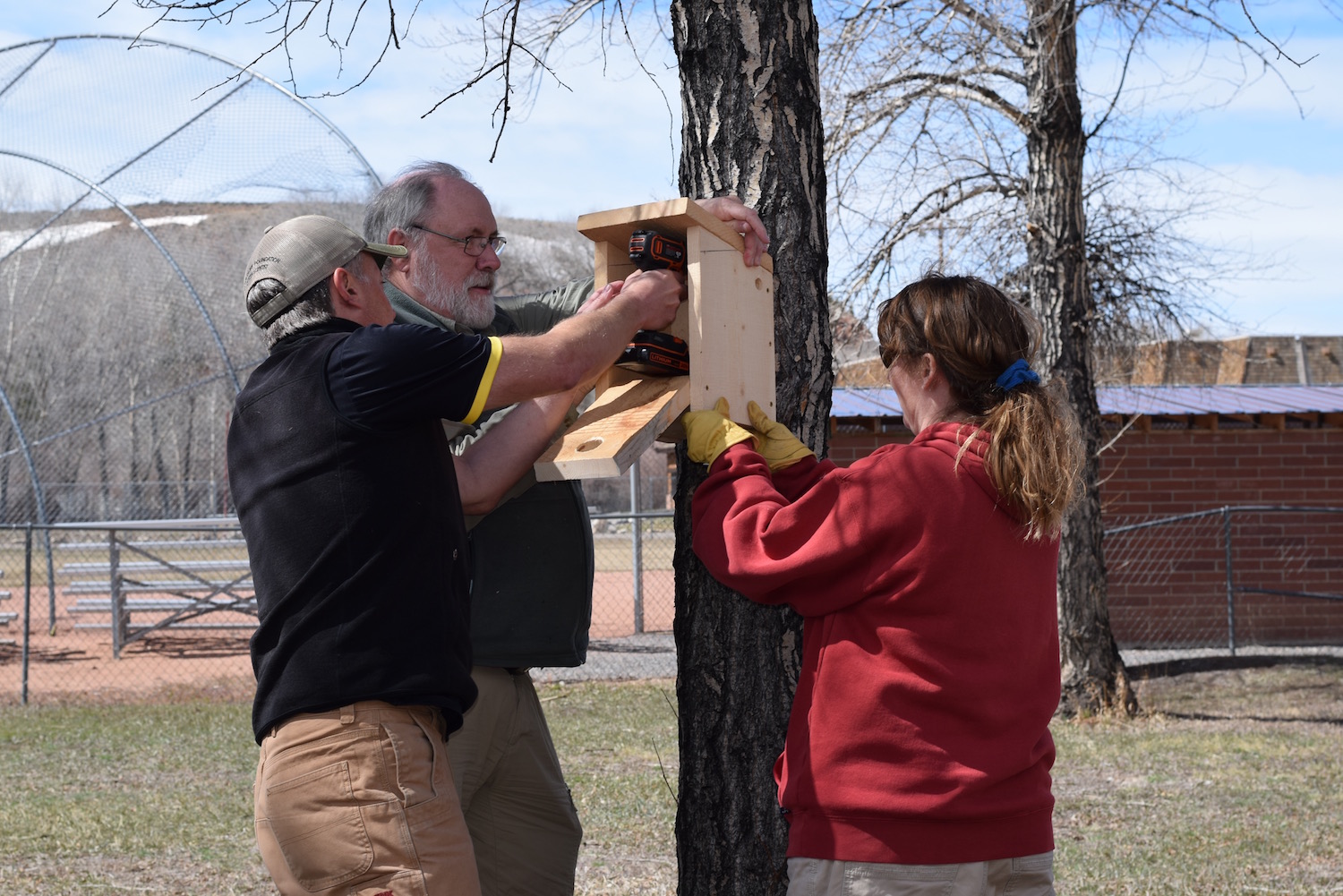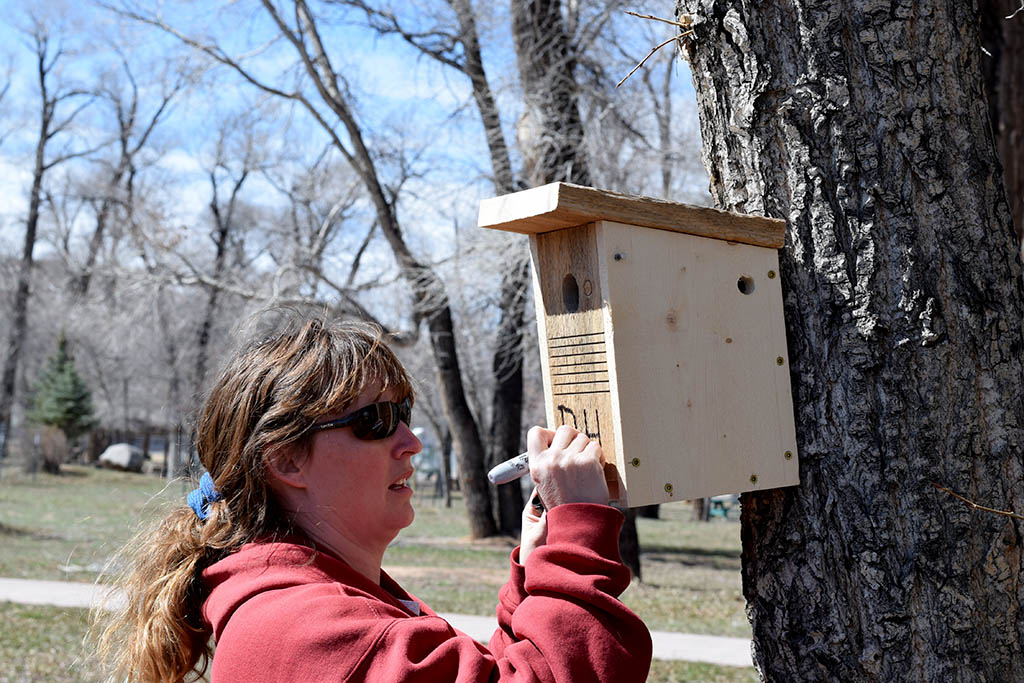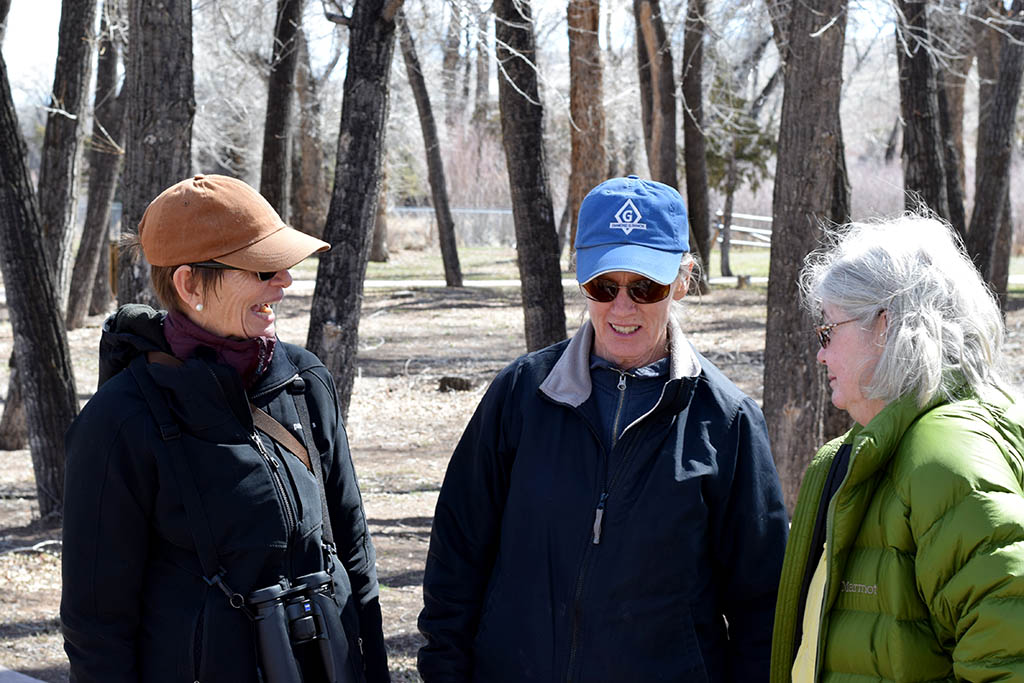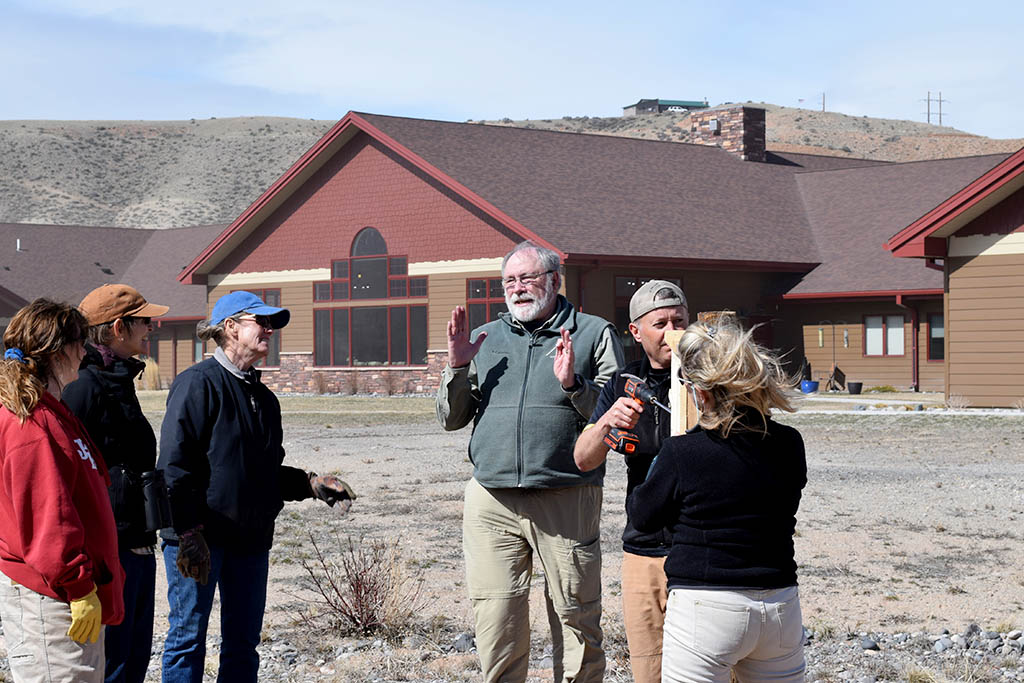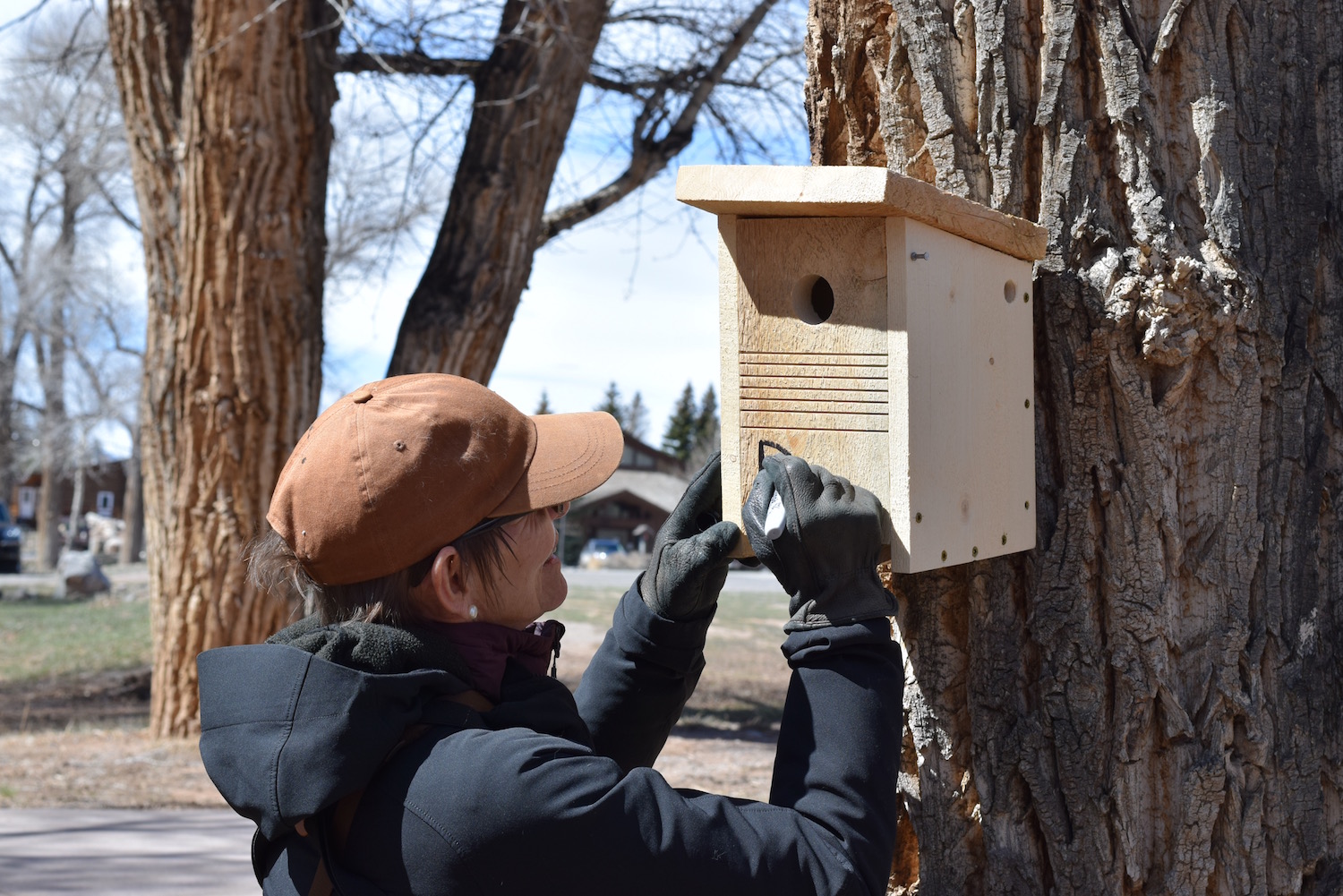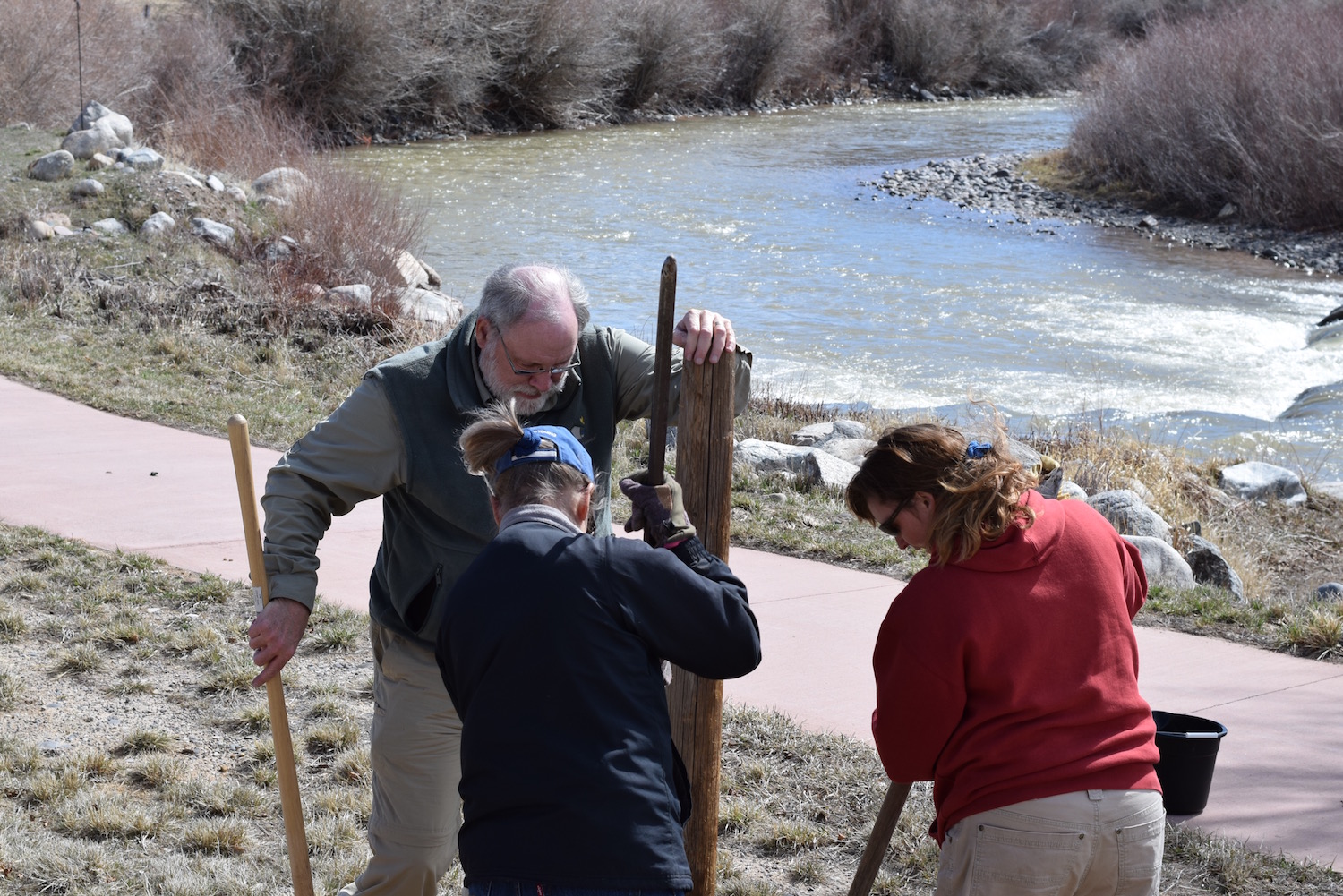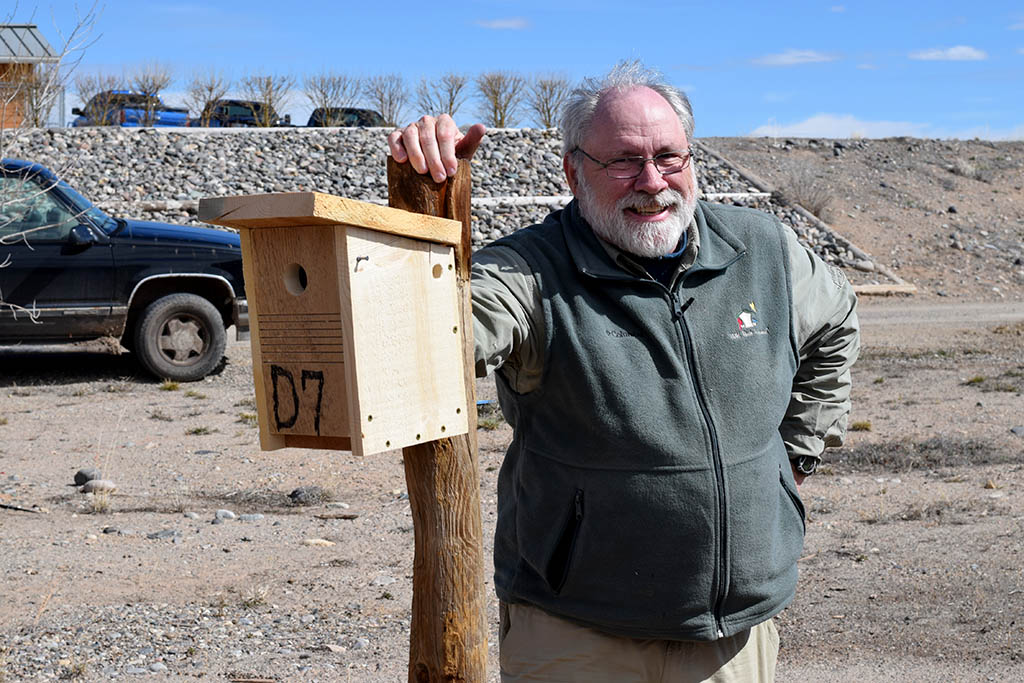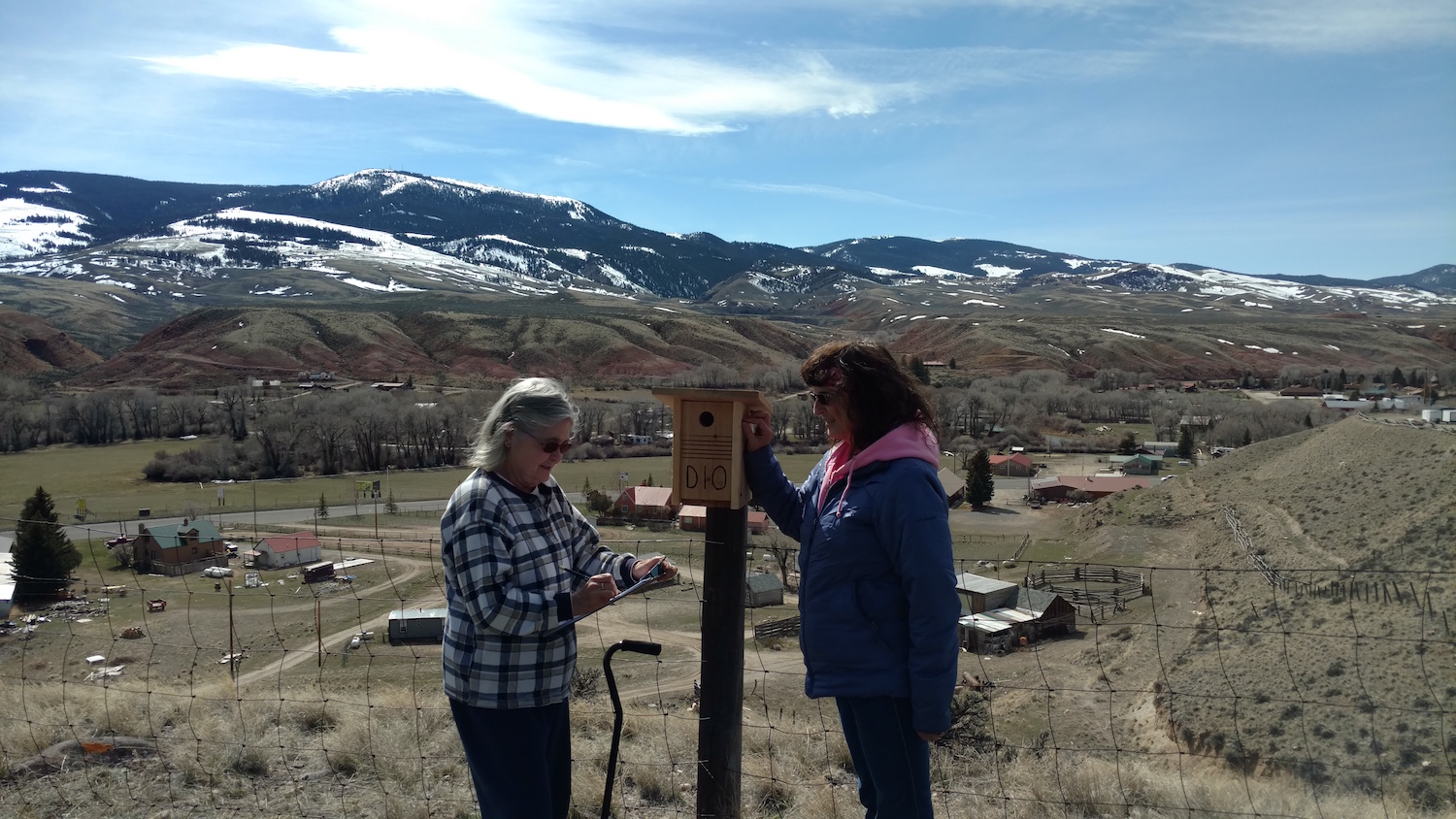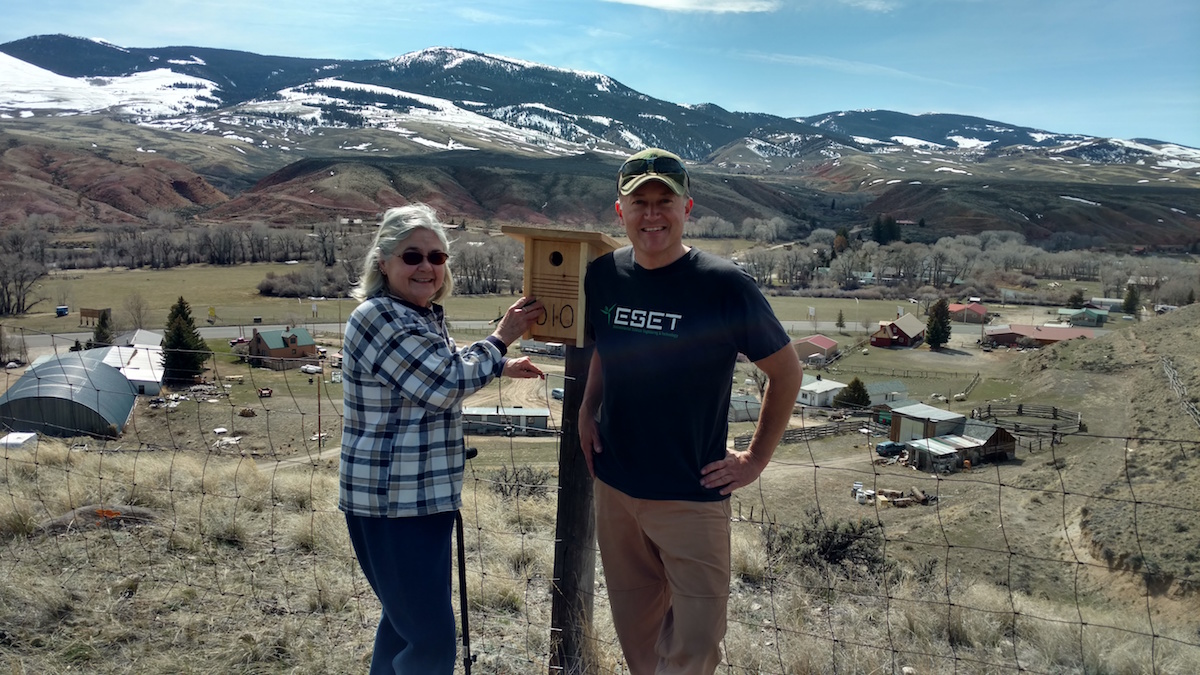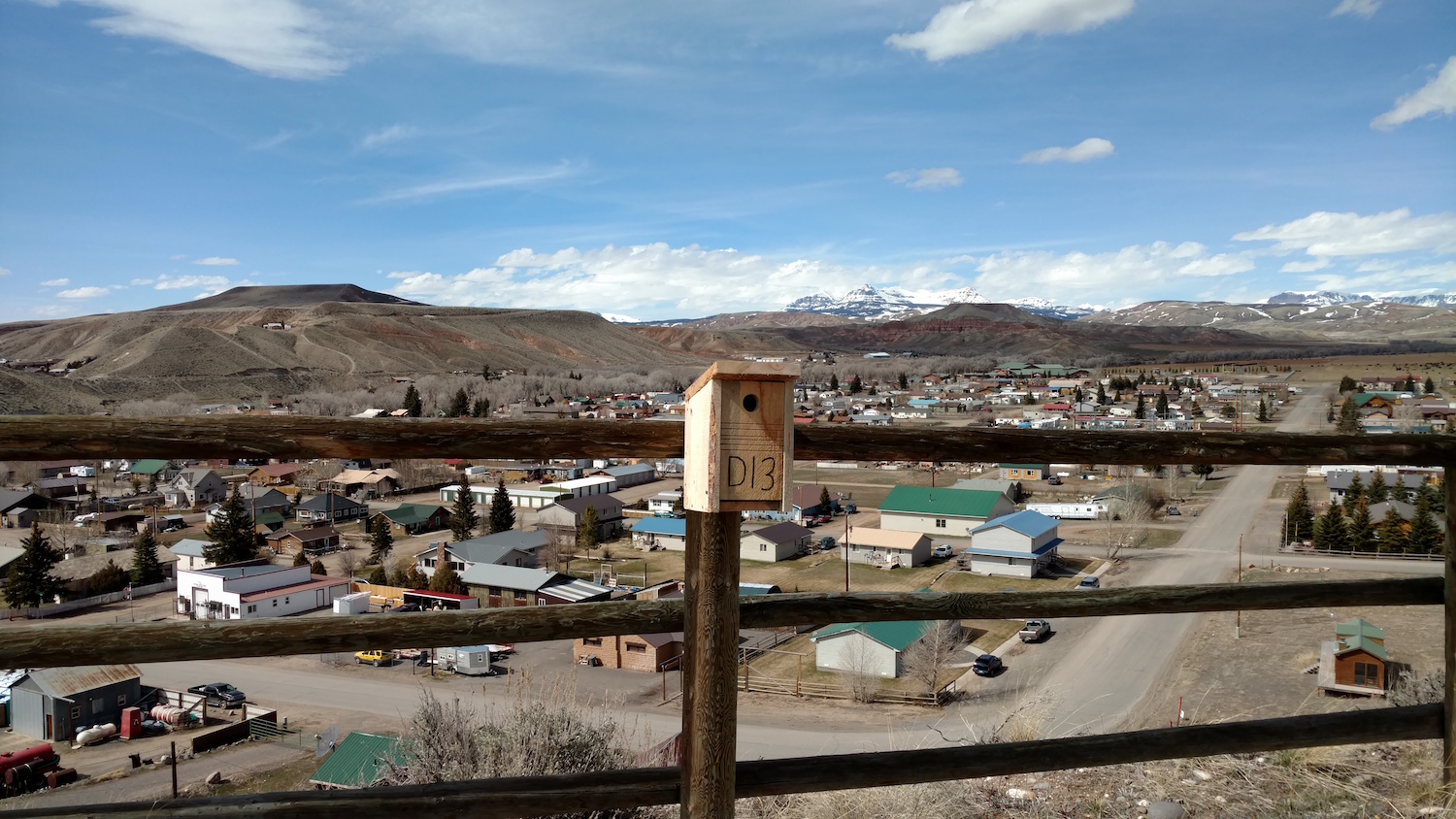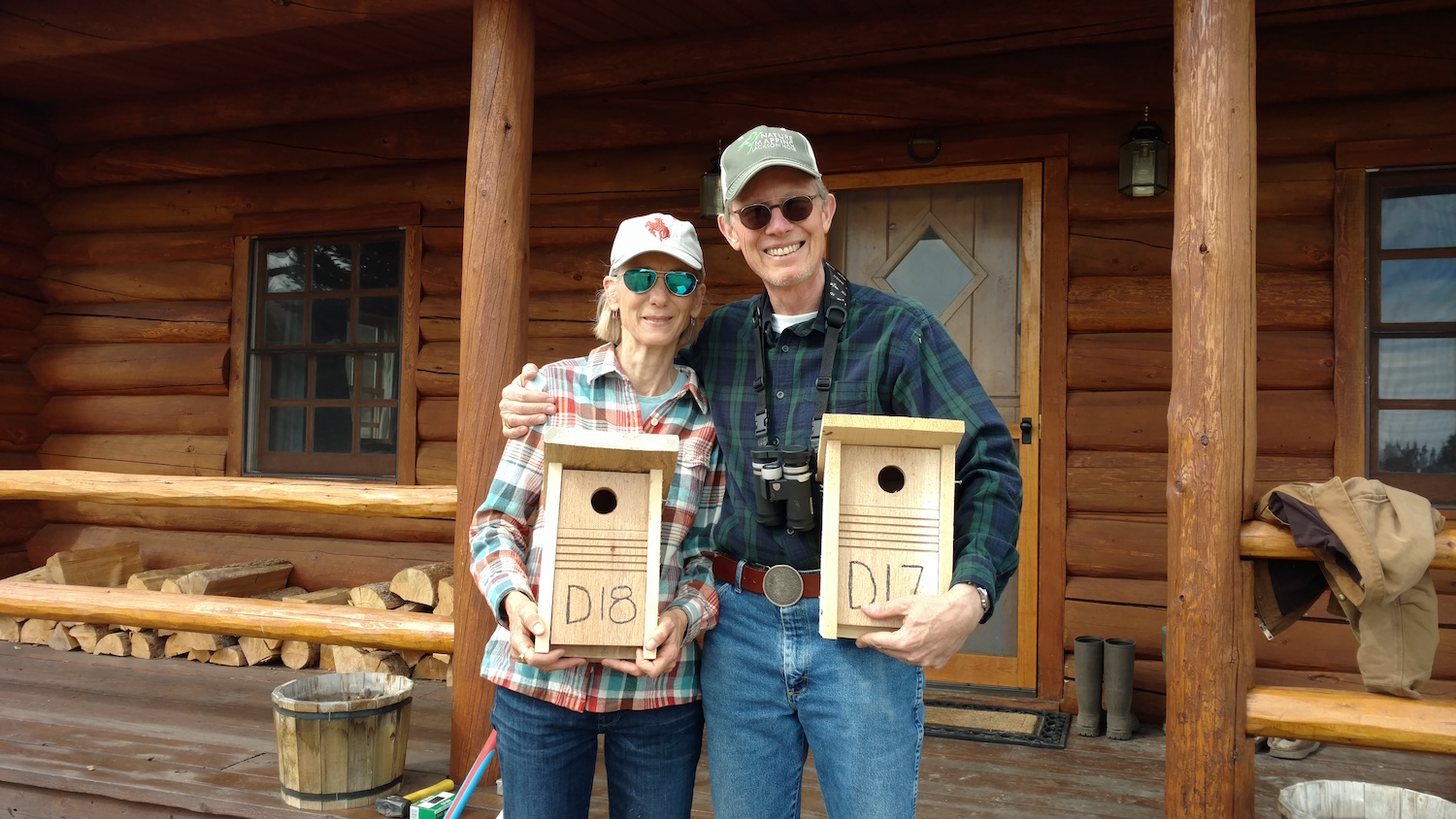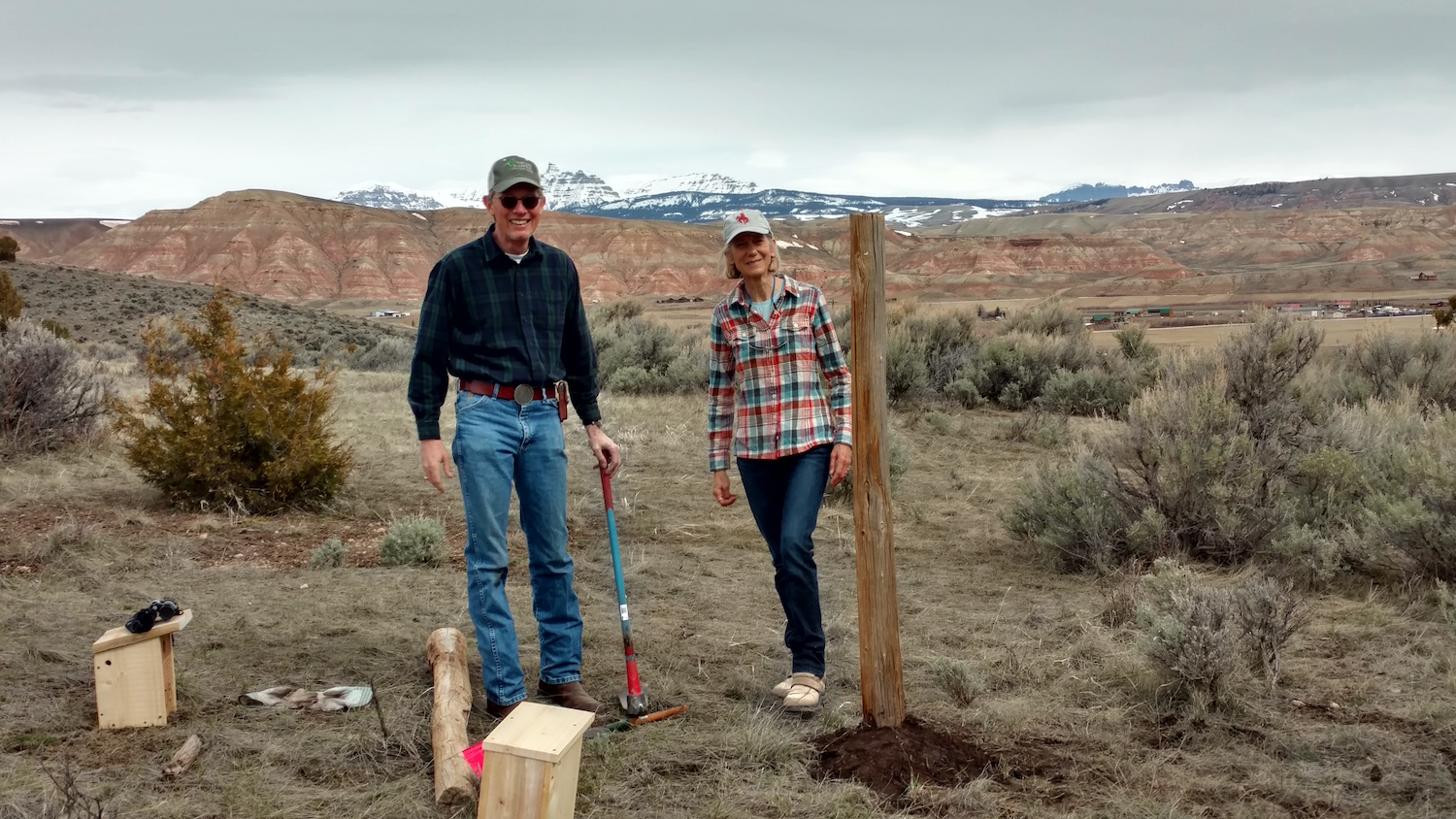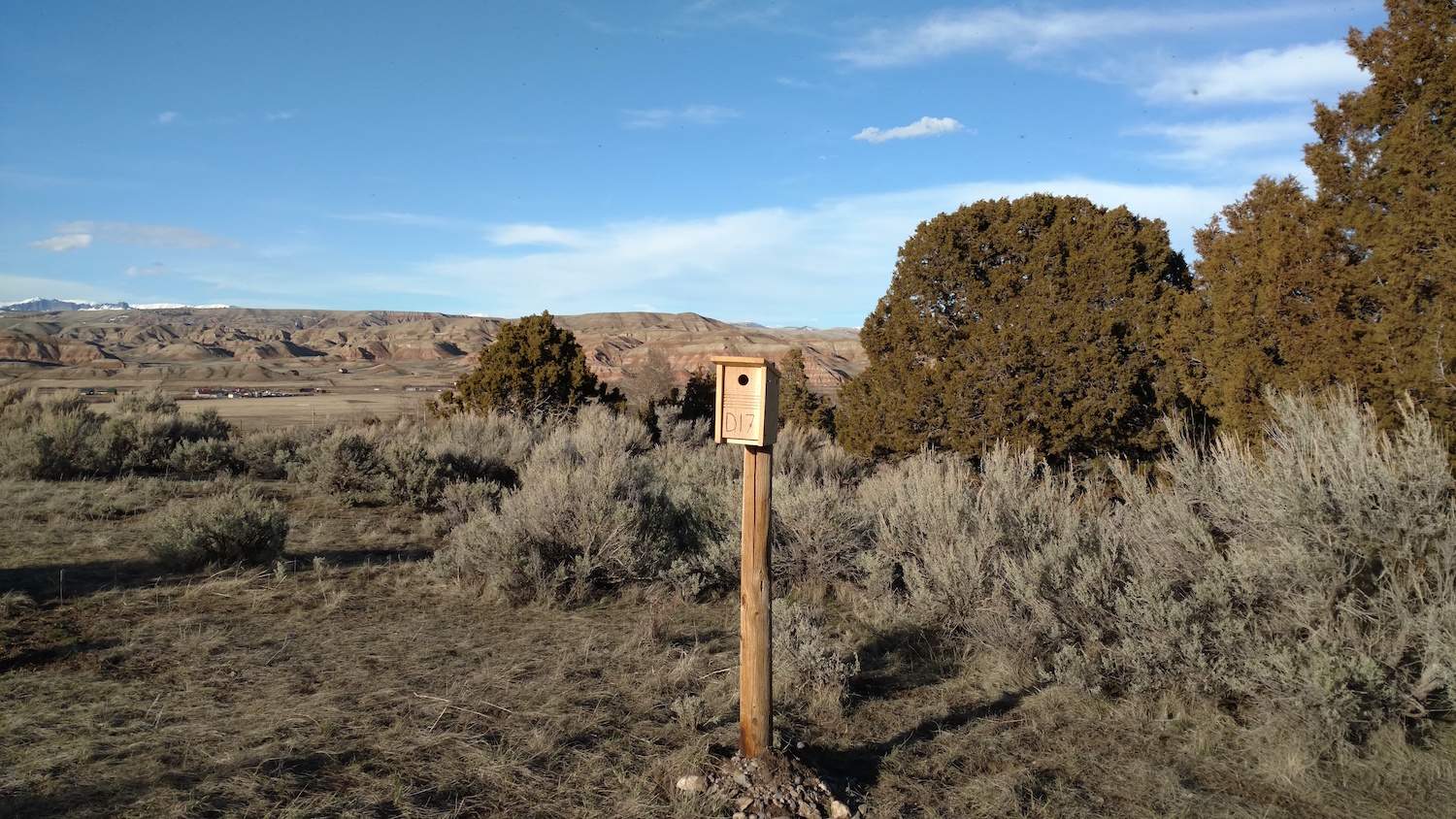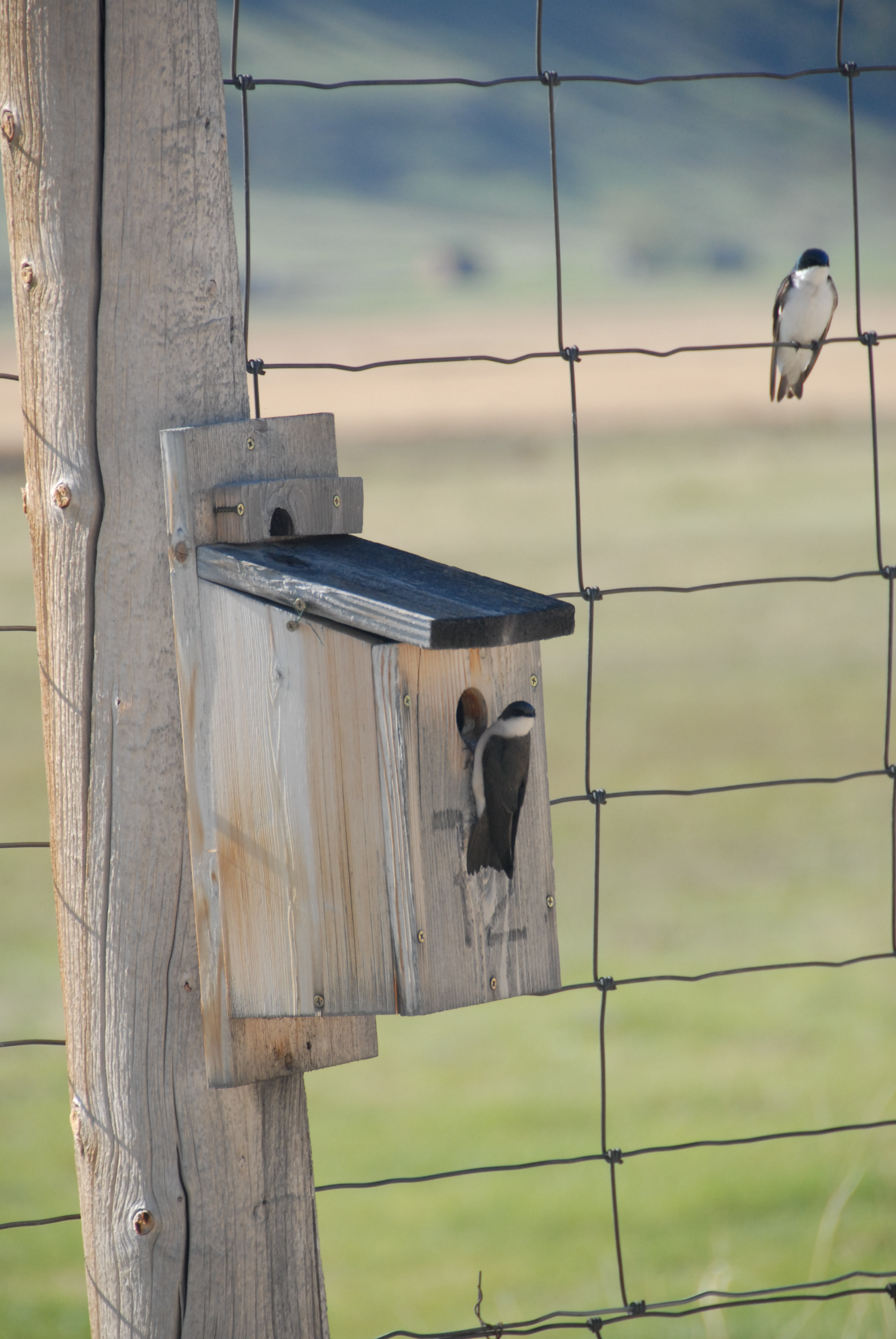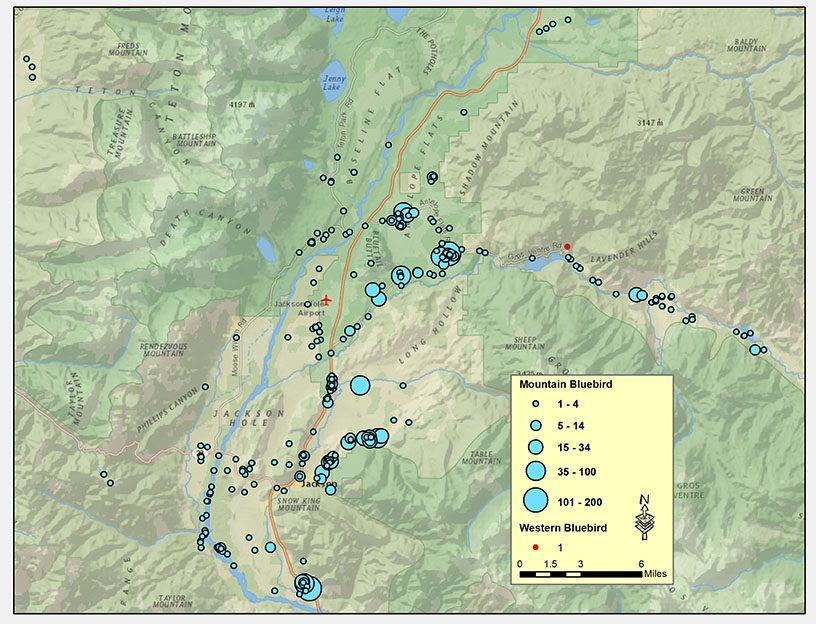2023 Mountain Bluebird Nestbox Monitoring Report
PDF with a full data and volunteer report from the sucess of the Mountain Bluebird Nestbox Project in 2023.
Learn about our Bluebird Trail
Each year, volunteers monitor a trail of over 100 nest boxes on the western edge of the National Elk Refuge.
Mountain Bluebird Nestbox Trail Project Background
Jackson Hole, Wyoming is known for its beautiful mountains and abundant wildlife. Visitors to the valley are awed by the thousands of elk that winter on the National Elk Refuge. Not visible to visitors is the fact that the high concentrations of elk have destroyed significant amounts of bird habitat. The Bluebird Nestbox Project is designed to mitigate for this habitat loss.
When elk are concentrated in an area with aspen stands they eat the young shoots, thus preventing new aspen growth. The elk also eat the bark off of the older aspen causing them to die. This entire process may take decades,but the end result is that trees necessary for cavity nesting birds disappear, causing a dramatic drop in breeding cavity nesters. Aspen trees have suffered the same fate on cattle ranches in the valley.
110 nestboxes are monitored every year once per week from April through July by approximately 12 dedicated volunteers. These data are entered into the Nature Mapping Jackson Hole database and will be given to the Cornell Lab of Ornithology, as well.
Tracking bluebird and other species’ nest success helps us gauge the health of our ecosystem in Jackson Hole and contributes valuable data to nationwide efforts to follow the impacts of a rapidly changing, human influenced landscape.
–Chuck Schneebeck, Birdscope, The Cornell Lab of Ornithology
Project Objectives
The program has three primary objectives:
1. Mitigate for lost habitat of cavity nesting birds in Jackson Hole.
2. Educate the public about the plight of cavity nesting birds.
3. Involve individuals in monitoring the boxes so they will become vested in sharing the message with others.
The Challenge
A variety of human activities have had a significant impact on the cavity nesting bird species of Jackson Hole. Management of large herbivores on cattle ranches and the National Elk Refuge has significantly reduced the number of young cottonwood and aspen trees, and other riparian vegetation that is necessary for many cavity-nesting birds, such as mountain bluebirds.
Overgrazing in concert with the policy of fire repression has interfered with the natural process of succession in aspen forests, resulting in old and dying groves with few trees reaching a level of maturity that can support cavity nesters. Additionally, many property owners remove dead trees from their land for safety and/or aesthetic purposes further reducing nesting opportunities for these birds.
The Solution
Jackson Hole Wildlife Foundation’s Nature Mapping Jackson Hole program monitors mountain bluebird nest boxes along the perimeter of the National Elk Refuge with its Bluebird Nest Box Project. The purpose of the project is to mitigate for habitat loss by providing nesting sites for cavity nesting birds and to provide an educational tool to raise awareness of the ecology of cavity nesters in Jackson Hole. This project also provides the opportunity for the community to gather information that may contribute to management decisions regarding herbivores and fire in the area.
The project is part of the Cornell Laboratory of Ornithology Birdhouse Network Citizen Science Project called NestWatch. People across North America are collecting similar information about the cavity nesting birds where they live. All of these data are entered into a database at the Cornell Laboratory of Ornithology and are used by scientists there to learn more about cavity nesting birds. If you volunteer for the Bluebird Nest Box Project, you will be doing real science.
Mountain Bluebirds Get a Room with a View in Dubois
In 2018, we had the pleasure of working with a committed group of bluebird enthusiasts in Dubois to install the first 35 boxes of the Dubois Community Bluebird Trail. Our super volunteer and bluebird trail expert Tim Griffith provided a trail monitoring orientation to the group at the Dubois Museum. Associate Director Kate Gersh spoke about the success of the nestbox trail in Jackson and why Jackson Hole Wildlife Foundation is interested in partnering with Dubois in a similar effort.
Bluebird Nest Box Monitoring Goals
The overall goal of the bluebird nest box monitoring program is to observe the use of the nest boxes without impacting nesting success. Monitors must take great care in not causing excessive disturbance to the nest while trying to obtain the following data:
- Nesting attempt number in each box
- Species using the box
- Report nesting by House sparrows or Starlings to coordinator
- Fate of the nesting attempt
- Apparent cause of failure
- Estimated first egg date
- Clutch size
- Estimated hatch date
- Hatch within 24 hours?
- Number of nestlings
- Fledge date
- Number of fledglings
- Number of unhatched eggs
- Blowfly evidence
- Comments & observations
- Need for maintenance.
Mountain Bluebird Nestbox Monitoring Guide PDF
PDF with in-depth Mountain Bluebird nestbox building and monitoring information created by lead bird bander Katelyn Maley.
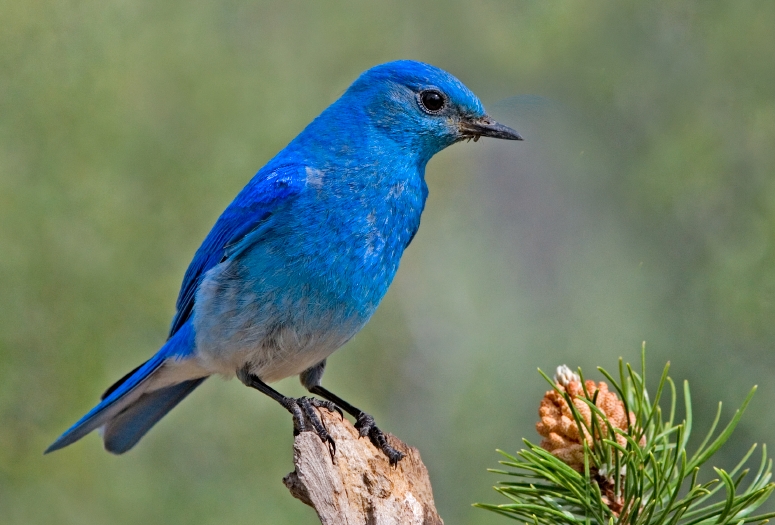
Bluebird Predator Control Info
• NestWatch – Nest box infographic with predator info
• Nestbox Builder – Controlling Predators
• North American Bluebird Society – NABS Predator Factsheet
Nestbox Monitoring Protocols:
Monitoring usually begins near the beginning of May. Nestboxes should be monitored at least once a week, and as often as every 4-6 days after eggs are observed if possible. Please remember to refrain from opening the box after the hatched nestlings have reached 12 days. We don’t want to encourage premature fledging. They will come out of the box soon thereafter on their own! All observations for each box should be recorded on the Field Worksheet. Monitors will need the following equipment in the field:
- Binoculars
- Clipboard
- Bluebird Nest Box Project Field Worksheet
- Pencils
- Phillips head screwdriver (always good to check the integrity of the box)
- Putty knife, cleaning brush and 10 to 1 water/bleach mixture for cleaning after final brood in late summer.
- Banded Mountain Bluebird Re-Sighting Data Sheet
Separate from our Mountain Bluebird Nestbox Trail Project, Nature Mappers enter observations of bluebirds throughout the valley. Bluebirds prefer mountain meadows and burned areas for foraging with tree cavities nearby for nesting. Little is known about their natural nest sites. Most research has been on behavior around artificial nest boxes so information on nesting behavior is valuable.
The large circles on the map indicate flocks of bluebirds, mostly observed in early spring and again in late September.
In asking Bert Raynes about this phenomenon, he said, “Early flocks seem to be mostly males in migration, with a few staying if they can. They are catching early hatches – bugs. Fall, I don’t know. Somehow birds find each other and travel together. How they recognize each other is an interesting question, although they do grow up with adults. Still you do kind of wonder.”
Wyoming is out of range for Western Bluebirds. We have one verified report. As with any rare species observation, please thoroughly document the ID and behavioral details. Our biologists will then contact you for verification.
Jackson Hole Wildlife Foundation
Office Location:
25 S. Willow St., Suite 10
Jackson, WY 83001
Mailing Address:
PO Box 8042
Jackson, WY 83002
All rights reserved.
Privacy Policy

